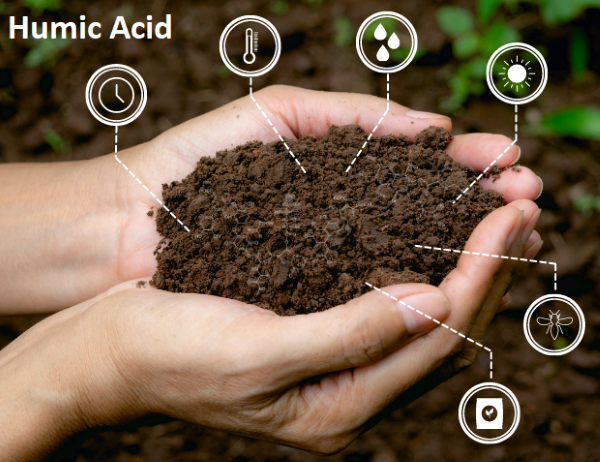In recent years, the agricultural industry has seen a surge in interest surrounding humic acid, a natural organic substance derived from decomposed organic matter. With its potential to enhance soil health and improve crop yields, the humic acid market is poised for significant growth, projected to surpass $1.1 billion by 2028.
Understanding Humic Acid:
Humic acid is a complex organic molecule that forms as a result of the decomposition of organic matter in soil over extended periods. It is commonly found in humus, the dark, organic material that remains after the breakdown of plant and animal residues. Humic acid is rich in carbon and contains a variety of essential minerals, making it a valuable component in soil fertility.
Enhancing Soil Health:
One of the key factors driving the demand for humic acid is its ability to enhance soil health. When applied to soil, humic acid acts as a natural chelator, binding with essential minerals and trace elements, and making them more readily available to plants. This improves nutrient uptake, leading to healthier and more robust crops.
Moreover, humic acid aids in soil structure improvement. It helps to aggregate soil particles, creating a more porous and well-aerated soil profile. This, in turn, promotes better root development and allows for better water infiltration and retention, mitigating issues related to soil compaction and waterlogging.
Boosting Crop Yields:
Research and field trials have consistently demonstrated the positive impact of humic acid on crop yields. By improving nutrient availability and enhancing soil structure, humic acid contributes to increased plant vigor and productivity. Farmers incorporating humic acid into their soil management practices often report higher yields, which can have a significant economic impact.
Environmental Benefits:
Beyond its effects on agricultural productivity, the use of humic acid also has environmental benefits. By optimizing nutrient use efficiency, it helps to reduce the need for synthetic fertilizers, which can lead to decreased nutrient runoff and potential water pollution. Additionally, the improved soil structure facilitated by humic acid can contribute to erosion control and overall soil conservation efforts.
Market Projections:
The humic acid market is expected to experience substantial growth in the coming years. Factors such as a growing awareness of sustainable agriculture practices, increasing demand for organic produce, and a focus on maximizing yields in a changing climate are driving this trend. As a result, industry analysts predict that the market for humic acid will exceed $1.1 billion by 2028.
Conclusion:
The rising prominence of humic acid in agriculture signifies a shift towards more sustainable and environmentally conscious farming practices. With its proven ability to enhance soil health and increase crop yields, humic acid is poised to play a crucial role in meeting the global demand for food production in the years to come. As the market continues to expand, ongoing research and innovation in this field will further unlock the full potential of this natural, organic resource.
Source: https://www.gminsights.com/industry-analysis/humic-acid-market









